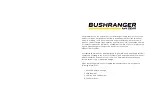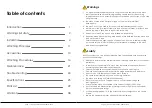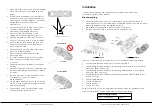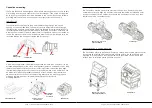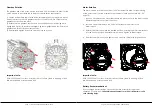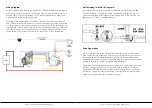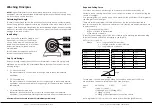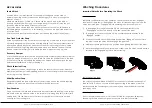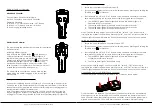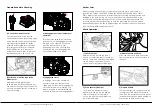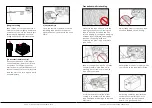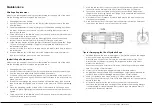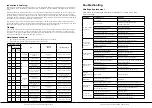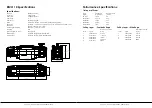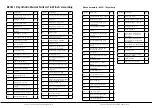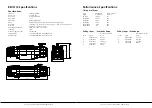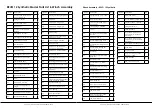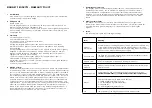
Winching Principles
NOTE:
Kingsley Enterprises Pty. Ltd. recommend that prior to using this recovery
equipment, users should undertake formal training from an accredited industry body
in winch use and vehicle recovery.
Calculating Fleet Angle
Load Rating
Duty Cycle Ratings
To obtain the best rope service, the direction of pull should be on a horizontal plane
within ±15 degrees and perpendicular to the centreline of the winch drum within ±15
degrees. If the fleet angle is larger than the recommended angles, incorrect spooling
may occur, resulting in the rope loading onto one side of the rope drum and possible
damage to the rope or winch.
Load and speed varies according to how
much rope is on the drum. The first layer
of rope on the drum delivers the slowest
speed and the maximum load. A full drum
delivers the maximum speed and the
minimum load.
For this reason, automotive winches are
rated at their first layer capacities.
Duty cycle ratings usually specify continuous, intermittent, or special duty (typically
expressed in minutes). The IEC (International Electrotechnical Commission) lists the
following ratings:
All automotive winches are rated at S3 intermittent periodic duty.
•
S1 - Continuous duty
The motor works at a constant load for enough time to reach temperature
equilibrium.
•
S2 - Short-time duty
The motor works at a constant load, but not long enough to reach temperature
equilibrium, and the rest periods are long enough for the motor to reach ambient
temperature.
•
S3 - Intermittent periodic duty
Sequential, identical run and rest cycles with constant load. Temperature
equilibrium is never reached. Starting current has little effect on temperature rise.
FULL DRUM
MAX. SPEED
MIN. LOAD
HALF DRUM
MED. SPEED
MED. LOAD
FIRST LAYER
MIN. SPEED
MAX. LOAD
Required Pulling Force
Your winch must be powerful enough to overcome the resistance caused by an
obstacle, such as moving water, mud, snow, sand or on a steep hill, as well as pulling the
vehicle’s full weight.
As a general guide, you need a winch with a maximum line pull at least 1.5 times greater
than the gross vehicle weight.
There are three factors listed that have influence on the line pull effect required to
recover the vehicle. The values and calculations in this section are approximate and are
for reference only.
a) Gross vehicle mass (GVM)
b) Type of surface to be traversed
c) Gradient to overcome
In recovery and loading, where the winch is used to pull something, the required pulling
force (RPF) can be calculated according to the formula:
RPF = (Wt X S) + (Wt X G)
For example, if a vehicle weighing 3,000kg is winched up an incline of 100% on a
marshy surface, the above formula would be used as follows:
Note: A gradient of 10% is a rise of one metre in ten metres (Height/Distance).
Where
RPF
Wt: 3,000kg,
= (Wt X S) + (Wt X G)
= (3,000kg X 0.52) + (3,000kg X 0.71)
= 1,560kg + 2,130kg
= 3,690kg of effect required to recover the vehicle.
S: 0.52
G: 0.71
Where:
Wt
S
G
= the gross vehicle mass (GVM)
= the type of surface to be traversed
= the gradient to overcome
Surface Type
Surface Drag (S)
Metal
0.15
Sand
0.18
Gravel
0.20
Soft Sand
0.22
Mud
0.32
Marsh
0.52
Clay
0.52
Gradient
Angle (θ)
Gradient (G)
5%
3°
0.06
10%
6°
0.11
20%
11°
0.2
30%
17°
0.3
50%
26°
0.44
70%
35°
0.58
100%
45°
0.71
Gradient
Distance
Height
θθ
| REVO VEHICLE RECOVERY WINCH
|REVO VEHICLE RECOVERY WINCH
Page 11
Page 12
Summary of Contents for REVO 10
Page 1: ...REVO 10S REVO 10W REVO 12S REVO 12W ...
Page 24: ......


